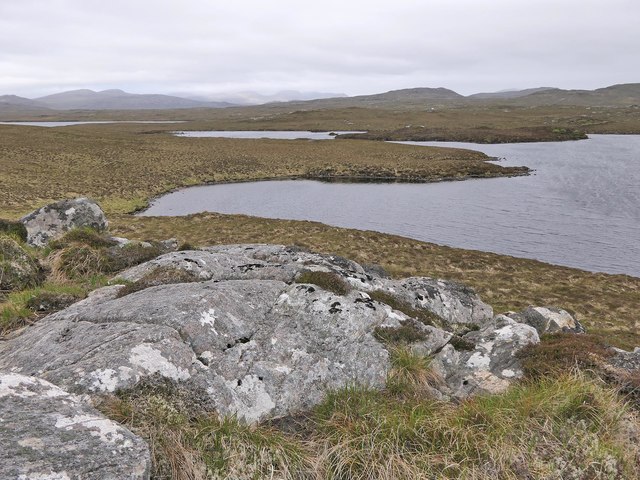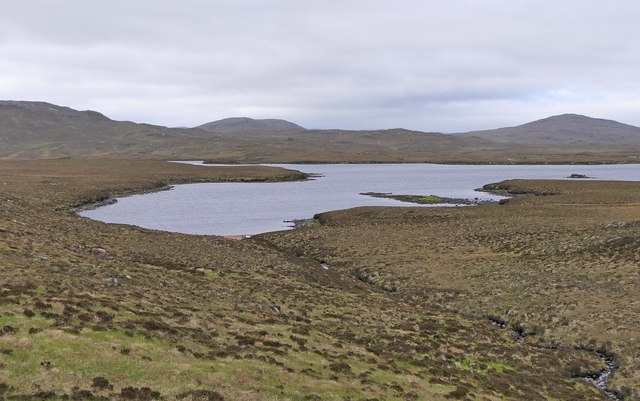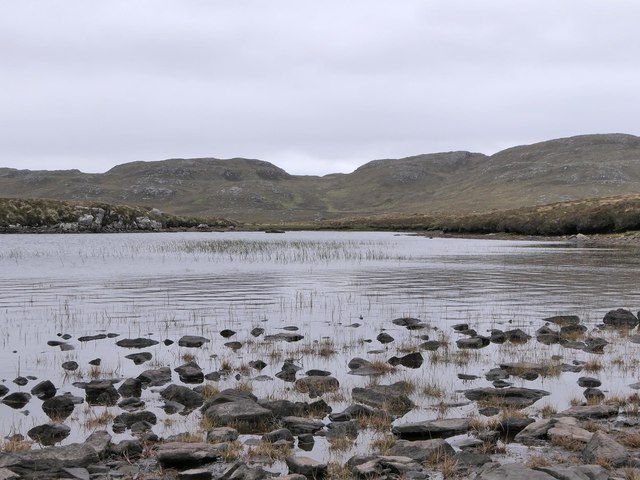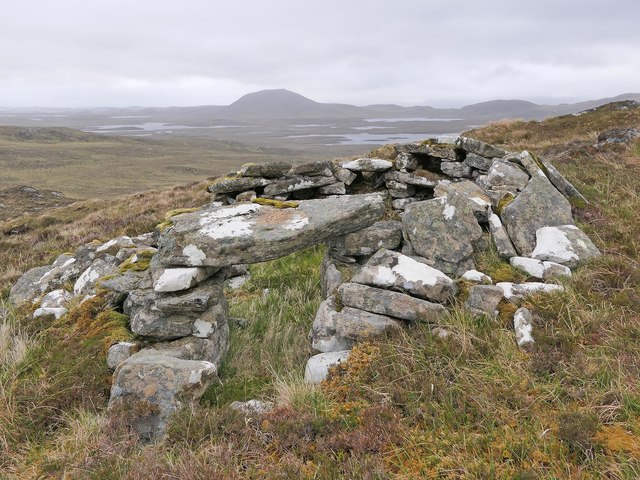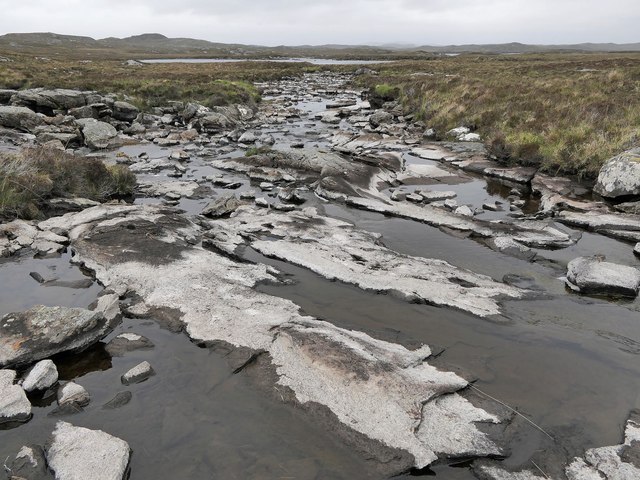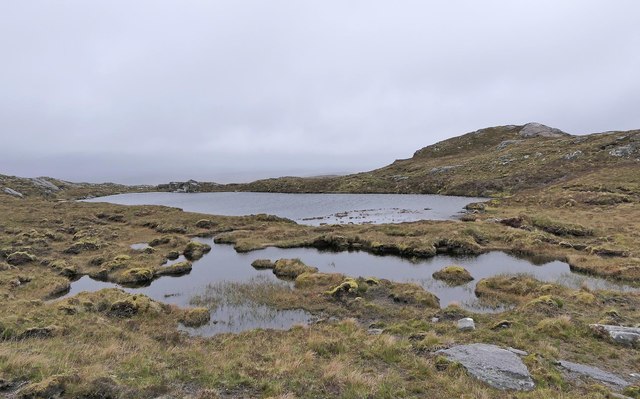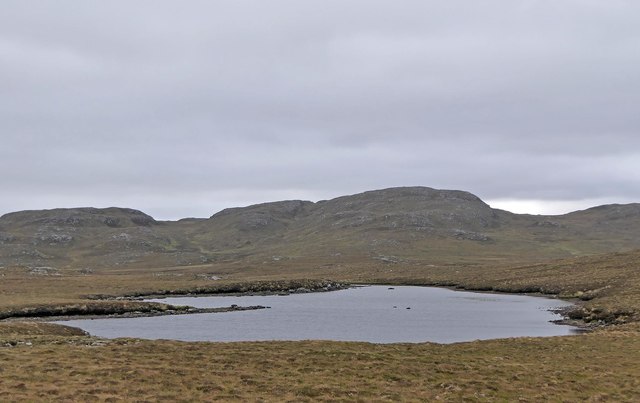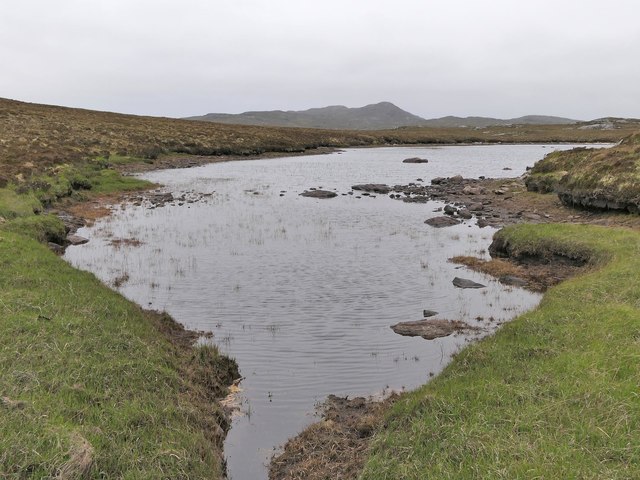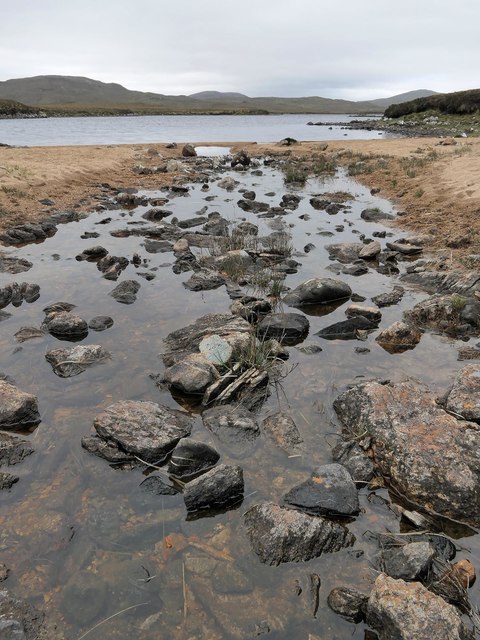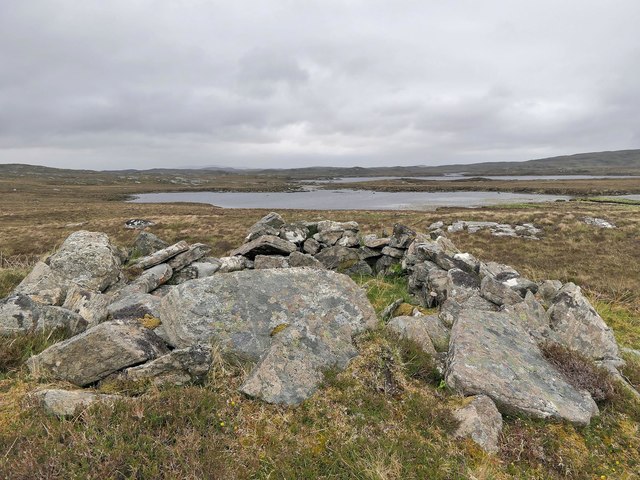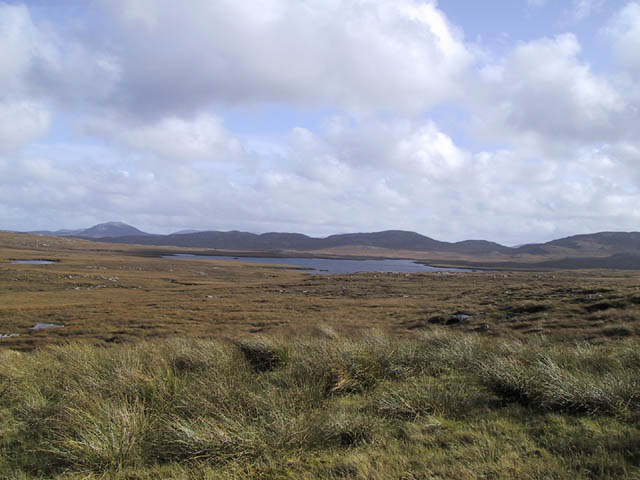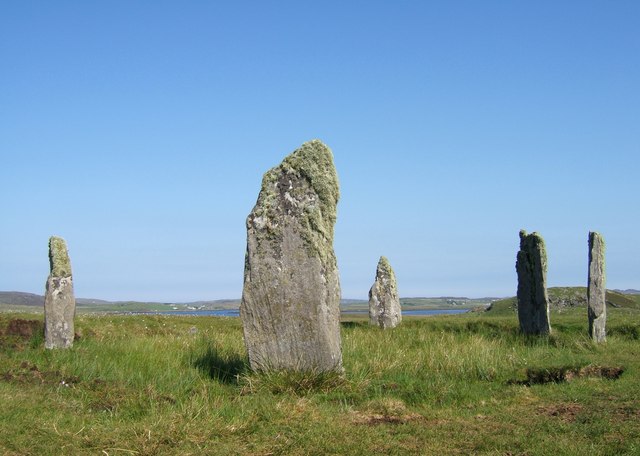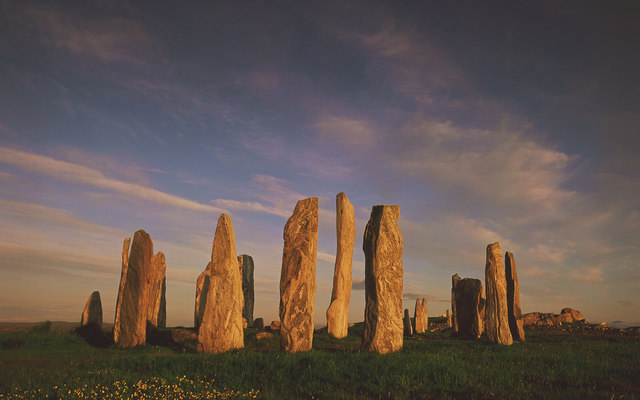Loch Àirigh a' Bhealaich
Lake, Pool, Pond, Freshwater Marsh in Ross-shire
Scotland
Loch Àirigh a' Bhealaich
![Ben Mohal [Beinn Mothal] Cairn Second HuMP of four today with Michael Earnshaw, Jim Bloomer and Martin Richardson in mixed weather. This is the cairn at the alternative summit.
Name: Ben Mohal [Beinn Mothal]
Hill number: 4944
Height: 207m / 679ft
Area: 24A: Lewis and Nearby Islands
Class: Hu,2
Grid ref: NB176240 (est)
Drop: 129m
Col: 78m NB168236](https://s1.geograph.org.uk/geophotos/03/69/37/3693745_84757201.jpg)
Loch Àirigh a' Bhealaich is a stunning freshwater loch located in Ross-shire, Scotland. Situated amidst the picturesque Scottish Highlands, this body of water is renowned for its natural beauty and tranquil atmosphere. The loch is nestled in a remote and secluded area, surrounded by rolling hills and lush greenery, creating a truly breathtaking landscape.
With a surface area of approximately [insert size], Loch Àirigh a' Bhealaich is relatively small compared to other lochs in the region. It is characterized by its crystal-clear waters, which reflect the surrounding scenery, giving it a mesmerizing and serene appearance. The loch is fed by various streams and small rivers, ensuring a constant flow of fresh water.
The shores of Loch Àirigh a' Bhealaich are diverse and varied, offering a range of habitats for various flora and fauna. The area surrounding the loch consists of a mixture of grasslands, marshes, and wetlands, creating an ideal environment for many species of birds, insects, and aquatic plants. It is also home to a diverse range of fish, including brown trout and perch, making it a popular destination for anglers.
The loch is a haven for outdoor enthusiasts, offering opportunities for fishing, boating, and wildlife observation. Visitors can explore the surrounding area by foot, taking in the breathtaking views and immersing themselves in the tranquility of nature. The peaceful ambiance of Loch Àirigh a' Bhealaich makes it an ideal spot for those seeking a retreat from the bustling city life and a chance to connect with the natural world.
If you have any feedback on the listing, please let us know in the comments section below.
Loch Àirigh a' Bhealaich Images
Images are sourced within 2km of 58.125376/-6.7864419 or Grid Reference NB1825. Thanks to Geograph Open Source API. All images are credited.
![Ben Mohal [Beinn Mothal] Cairn Second HuMP of four today with Michael Earnshaw, Jim Bloomer and Martin Richardson in mixed weather. This is the cairn at the alternative summit.
Name: Ben Mohal [Beinn Mothal]
Hill number: 4944
Height: 207m / 679ft
Area: 24A: Lewis and Nearby Islands
Class: Hu,2
Grid ref: NB176240 (est)
Drop: 129m
Col: 78m NB168236](https://s1.geograph.org.uk/geophotos/03/69/37/3693745_84757201.jpg)
![Ben Mohal [Beinn Mothal] Summit Second HuMP of four today with Michael Earnshaw, Jim Bloomer and Martin Richardson in mixed weather. View of the 207 metre spot height towards the cairn.
Name: Ben Mohal [Beinn Mothal]
Hill number: 4944
Height: 207m / 679ft
Area: 24A: Lewis and Nearby Islands
Class: Hu,2
Grid ref: NB176240 (est)
Drop: 129m
Col: 78m NB168236](https://s1.geograph.org.uk/geophotos/03/69/37/3693757_f0c1ec6a.jpg)
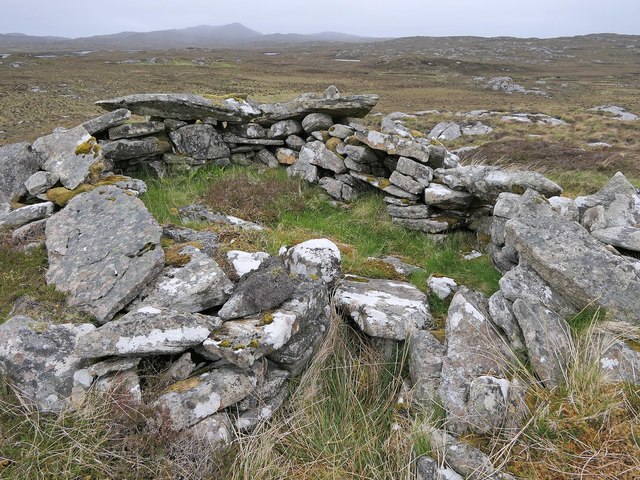
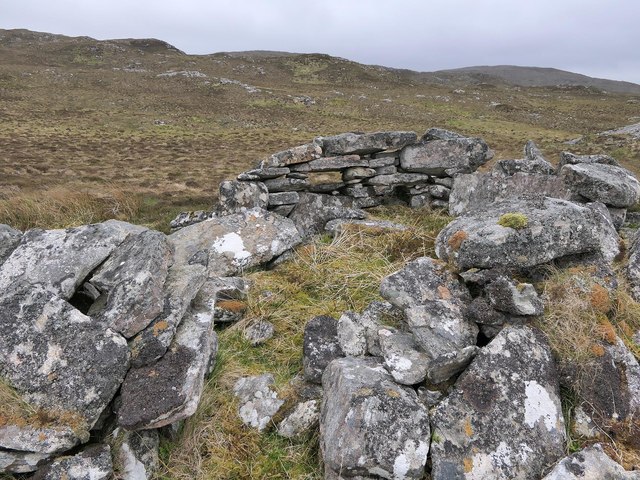
Loch Àirigh a' Bhealaich is located at Grid Ref: NB1825 (Lat: 58.125376, Lng: -6.7864419)
Unitary Authority: Na h-Eileanan an Iar
Police Authority: Highlands and Islands
What 3 Words
///bongo.crafts.solved. Near Carloway, Na h-Eileanan Siar
Nearby Locations
Related Wikis
Eilean Mòr, Loch Langavat
Eilean Mòr is an island in Loch Langavat on the Isle of Lewis in the Outer Hebrides of Scotland. == Footnotes ==
Gisla Hydro-Electric Scheme
Gisla Hydro-Electric Scheme was a small scheme promoted by the North of Scotland Hydro-Electric Board on the Isle of Lewis, Outer Hebrides, Scotland. It...
Callanish IV
The Callanish IV stone circle (Scottish Gaelic: Ceann Hulavig) is one of many megalithic structures around the better-known (and larger) Calanais I on...
Eilean Chearstaidh
Eilean Kearstay (Scottish Gaelic: Eilean Chearstaigh) is an uninhabited island in Loch Roag in the Outer Hebrides of Scotland. It lies south east of Great...
Callanish Stones
The Callanish Stones (or "Callanish I": Scottish Gaelic: Clachan Chalanais or Tursachan Chalanais) are an arrangement of standing stones placed in a cruciform...
Callanish II
The Callanish II stone circle (Scottish Gaelic: Cnoc Ceann a' Gharaidh) is one of many megalithic structures around the better-known (and larger) Calanais...
Garynahine
Garynahine (Scottish Gaelic: Gearraidh na h-aibhne) is a settlement on Lewis, in the Outer Hebrides, Scotland. Garynahine is situated at a T-junction where...
Garynahine Estate
Garynahine Estate (Scottish Gaelic: Gearraidh na h-aibhne) in Garynahine, a village on the Isle of Lewis, Outer Hebrides was owned by Sir James Matheson...
Have you been to Loch Àirigh a' Bhealaich?
Leave your review of Loch Àirigh a' Bhealaich below (or comments, questions and feedback).
![Ben Mohal [Beinn Mothal] Looking from the alternative top cairn back towards the 207 metre spot height.
Name: Ben Mohal [Beinn Mothal]
Hill number: 4944
Height: 207m / 679ft
Area: 24A: Lewis and Nearby Islands
Class: Hu,2
Grid ref: NB176240 (est)
Drop: 129m
Col: 78m NB168236](https://s3.geograph.org.uk/geophotos/03/69/37/3693751_2745a451.jpg)
